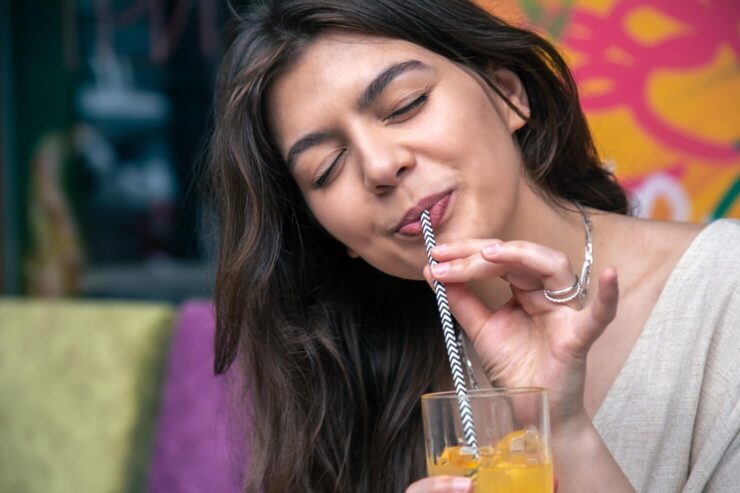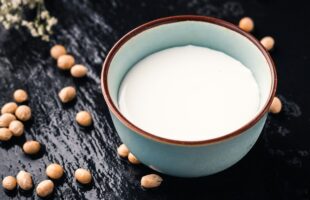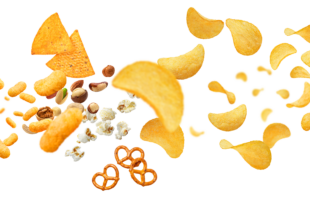
Image by Freepik
By Cath Isabedra
Consumer preferences evolve at a dizzying pace, and food manufacturers find themselves at a crossroads on how to timely respond. Beyond crafting new flavors, they must ensure they provide consumers with memorable experiences with consistency and quality across batches.
It’s here that the integration of electronic tongues and artificial intelligence (AI) comes in.
AI and Electronic Tongues in Beverage Development
Electronic tongues, equipped with AI algorithms, are at the forefront of beverage innovation, enabling manufacturers to fine-tune their products according to specific consumer taste preferences. These devices analyze the chemical makeup of beverages and, with AI’s pattern recognition capabilities, can predict how well a new drink will resonate with target audiences. This process allows for the rapid iteration of formulations to achieve a product that hits the right notes in terms of taste and aroma.
A Symphony of Flavors and Textures
Imagine a world where your morning coffee or your evening cocktail is not just made but meticulously designed to fit your unique taste preferences. AI, working hand-in-hand with electronic tongues, is turning this dream into reality.
These advanced technologies can now decode the subtleties of flavor with astonishing accuracy, offering a personalized drinking experience that was once the domain of high-end bespoke services. But it’s not just about taste.
Technology is advancing to replicate the feel of each sip, ensuring that the beverage not only tastes like your favorite drink but also feels like it, from the fizz of a soda to the creamy texture of a latte.
The journey towards capturing the full sensory experience of beverages is gaining momentum, propelled by cutting-edge sensory technology. Research unveils how nanotechnology equips electronic tongues with the ability to evaluate textural elements, marking a significant step towards beverages that match the ideal taste profile and the perfect mouthfeel.
With the precision analysis provided by electronic tongues, beverages can be finely tuned to the diverse preferences of consumers around the globe. This technology is a game-changer for industries like wine-making, where the subtle dance of flavors caters to the palate of different cultures and demographics, offering a glimpse into a future where every drink reflects individual tastes and preferences.
This capability to distinguish between subtle flavor notes allows for the customization of beverages to cater to localized tastes, potentially revolutionizing global beverage marketing strategies.
Texture Analysis in Beverages
Incorporating texture analyzers in developing beverages, especially for groups with specific dietary needs like older people, represents a significant advancement. These tools can help formulate drinks that are easier to consume without compromising taste or nutritional value by adjusting texture to prevent issues such as dysphagia.
Combining AI and electronic tongues can significantly enhance quality control processes in the beverage industry. Manufacturers can ensure consistency and safety in mass-produced products by continuously monitoring beverages’ chemical composition and flavor profiles and identifying and rectifying real-time deviations.
Development of Sensory Labels
Sensory labels, informed by data from electronic tongues, could revolutionize how consumers understand and appreciate beverages. These labels would provide insights into a product’s flavor profiles, mouthfeel, and overall sensory experience, aiding consumers in making informed choices aligned with their preferences.
A Greener Glass
Beyond the sensory experience, this technological union is paving the way for a more sustainable future. Optimizing recipes to minimize waste and exploring sustainable sourcing brings AI and electronic tongues to the forefront of eco-conscious beverage production.
Manufacturers can reduce the likelihood of unsold products by precisely tailoring products to consumer preferences. Furthermore, AI can identify novel uses for by-products, transforming them into valuable ingredients for new beverages.
Embracing the Future of Flavors
Integrating AI with sensory technology in beverages presents challenges, including the complexity of accurately replicating human sensory experiences and the need for vast datasets to train AI models.
However, the potential for innovation is immense, with the next 5-10 years likely to see breakthroughs in texture analysis, flavor synthesis, and personalized nutrition.
It’s clear that these technologies are not mere tools but partners in creativity. They provide a canvas on which manufacturers can paint a myriad of sensory experiences, offering a level of customization and quality previously unimaginable. This partnership between technology and taste opens the door to a world where beverages are more than just drinks; they are personalized expressions of individuality.
The call to action for food manufacturers is clear. Embrace the potential of electronic tongues and AI to revolutionize the beverage industry. It’s time to move beyond traditional boundaries, exploring how these technologies can create drinks that taste exceptional and reflect consumers’ unique preferences and values worldwide.
The future of beverages is not just about what we drink but how we craft those drinks to enrich our lives and the world around us. Let’s raise our glasses to innovation, sustainability, and the endless pursuit of flavor that resonates with every sip.
Sources
- Neuroscience News. “AI-Enabled Electronic Tongues Promise a New Era in Food Science.”
- The Telegraph. “Scientists Create AI Tongues to Taste Medicine.”
- National Center for Biotechnology Information (NCBI). “Electronic Tongues: A Review.”
- YouTube. “How Electronic Tongues Work.”
- MDPI Sensors. “Advancements in Electronic Tongues for Beverage Analysis.”
This story first came out in our “Innovation and the Art of Mouthfeel” issue.








